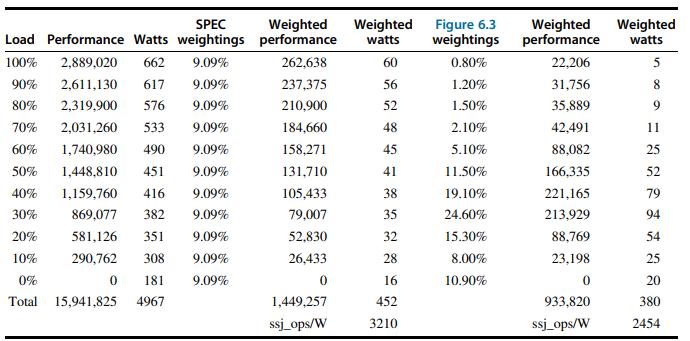This exercise illustrates the interactions of energy proportionality models with optimizations such as server consolidation and energy-efficient
Question:
This exercise illustrates the interactions of energy proportionality models with optimizations such as server consolidation and energy-efficient server designs. Consider the scenarios shown in Figures 6.38 and 6.39.
a. Consider two servers with the power distributions shown in Figure 6.38: case A (the server considered in Figure 6.4) and case B (a less energy-proportional but more energy-efficient server than case A). Assume the system utilization mix in column 7 of Figure 6.4. For simplicity, assume a discrete distribution across 1000 servers, with 109 servers at 0% utilization, 80 servers at 10% utilizations, etc., as shown in row 1 of Figure 6.39. Assume performance variation based on column 2 of Figure 6.4. Compare the total performance and total energy for this workload mix for the two server types.
b. Consider a cluster of 1000 servers with data similar to the data shown in Figure 6.4 (and summarized in the first rows of Figures 6.38 and 6.39). What are the total performance and total energy for the workload mix with these assumptions?
Now assume that we were able to consolidate the workloads to model the distribution shown in case C (second row of Figure 6.39). What are the total performance and total energy now? How does the total energy compare with a system that has a linear energy-proportional model with idle power of zero watts and peak power of 662 W?
c. Repeat part (b), but with the power model of server B, and compare with the results of part (a).
Figure 6.38:

Figure 6.39:

Figure 6.4:

Step by Step Answer:

Computer Architecture A Quantitative Approach
ISBN: 9780128119051
6th Edition
Authors: John L. Hennessy, David A. Patterson





